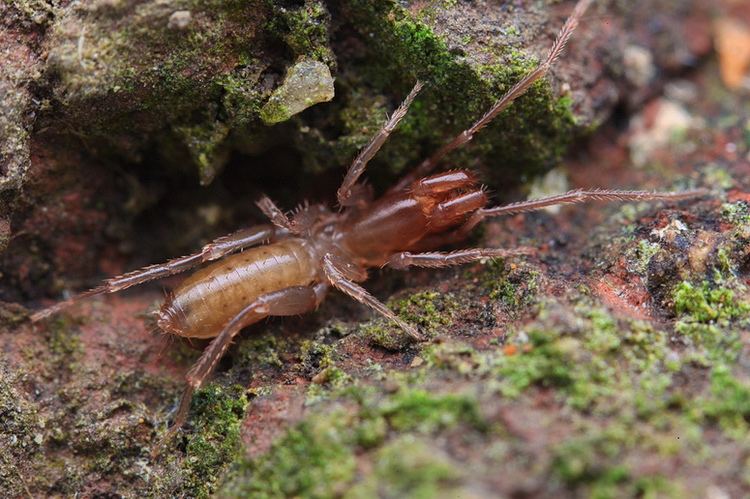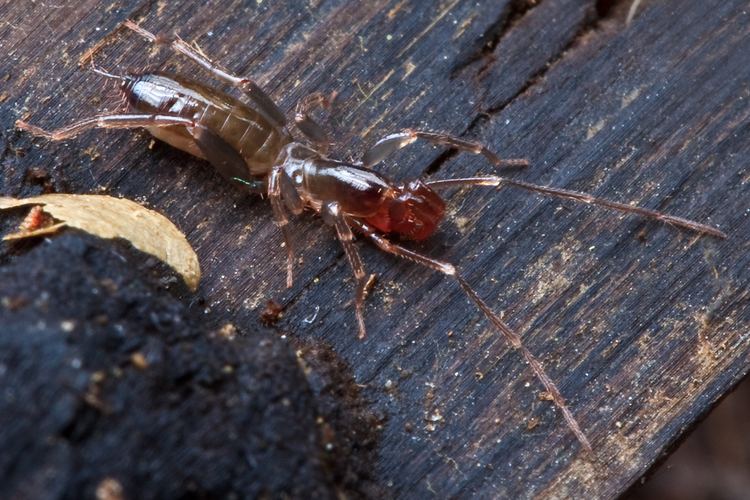Higher classification Tetrapulmonata | Scientific name Schizomida Rank Order | |
 | ||
Similar Arachnid, Microscorpions, Ricinulei, Thelyphonida, Hubbardiidae | ||
Schizomida (common name shorttailed whipscorpion) is an order of arachnids, generally less than 5 millimetres (0.20 in) in length.
Contents
The order is not yet widely studied. As of 2005, more than 230 species of schizomids have been described worldwide, most belonging to the Hubbardiidae family. A systematic review including a full catalogue may be found in Reddell & Cokendolpher (1995).

Locomotion behavior of schizomida arachnida
Anatomy

Schizomids are relatively small, soft-bodied arachnids, somewhat similar in appearance to whip scorpions. The prosoma (cephalothorax) is divided into three regions, each covered by plates, the large protopeltidium and the smaller, paired, mesopeltidia and metapeltidia. The name means "split or cleaved middle", referring to the way the prosoma is divided into two separate plates.

The opisthosoma (abdomen) is a smooth oval of 12 recognizable segments. The first is reduced and forms the pedicel, while the last three are constricted, forming the pygidium. The last segment bears a short whip-like tail or flagellum, consisting of no more than four segments. The females generally have 3-4-segmented flagella, while in males it is single segmented.

Like the related orders Thelyphonida and Amblypygi, and the more distantly related Solifugae, the schizomids use only six legs for walking, having modified their first two legs to serve as sensory organs. They also have large well-developed pincer-like pedipalps just before the sensory legs. The hind legs are modified for jumping, as part of their escape response when threatened. Schizomids have no actual eyes, but a few species have vestigial eyespots capable of telling light from dark. They breath through a single pair of book lungs, as the other pair is lost.
Habitat
Schizomids are generally tropical creatures, although some populations have been found in California and Arizona. They tend to live in the top layer of soil and in the cavities beneath logs and rocks, where they can avoid desiccation. They seek water and avoid light. Some species are cave dwellers, and a few live in or near termite or ant colonies.
Subtaxa
Schizomids are grouped into three families:
Videos
[1] von Stefan F. Wirth
